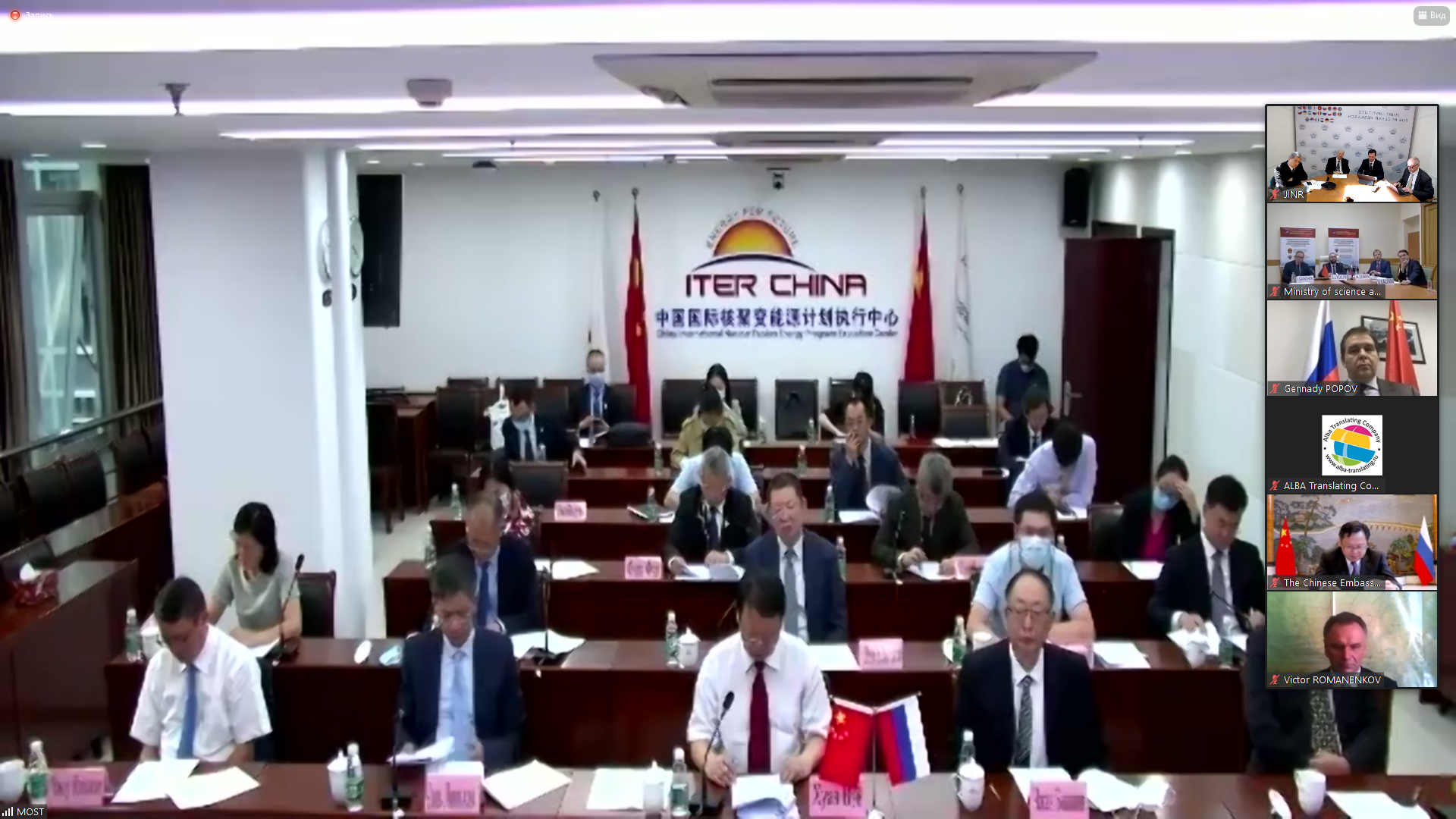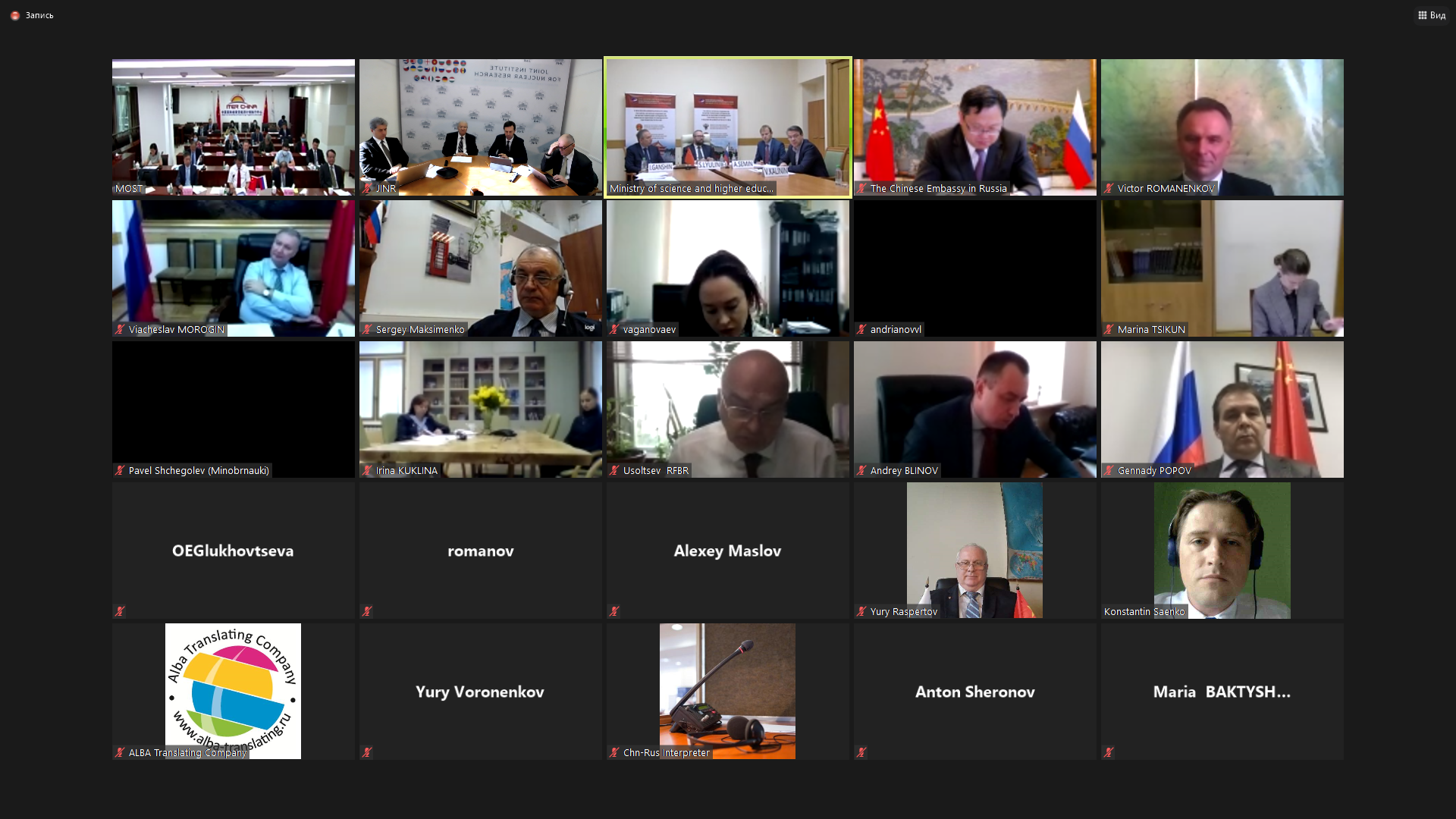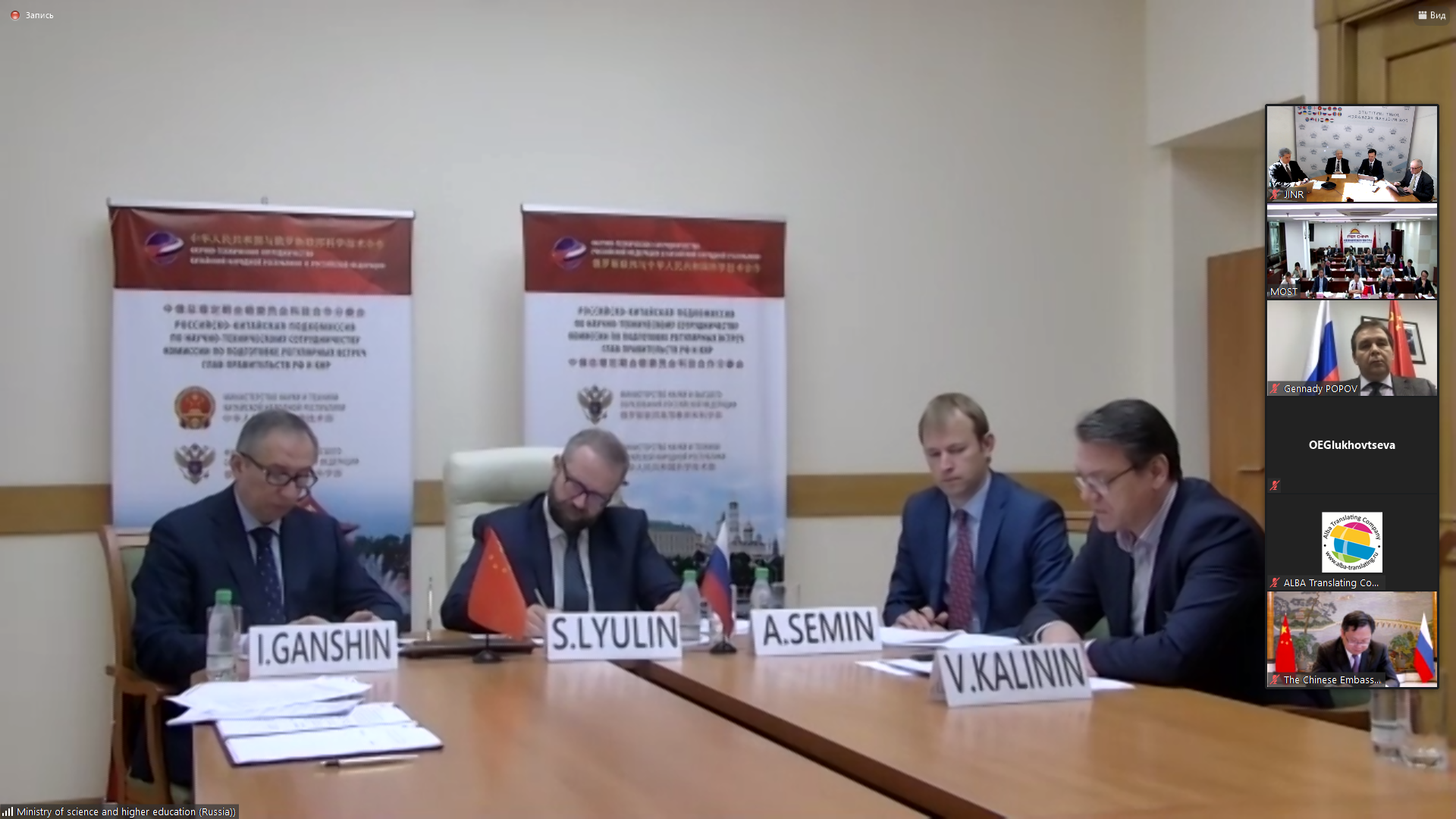First practical results of agreement on China’s participation in NICA
News, 19 September 2020
On 18 September, a JINR delegation took part in the 24th meeting of the Russian-Chinese sub-commission for scientific and technical cooperation that was held in a video conference format. JINR was represented by First Vice-Director RAS Academician G. V. Trubnikov, Leader of the NICA mega-science project and Vice-Director, RAS Corresponding Member V. D. Kekelidze, VBLHEP Deputy Director H. G. Khodzhibagiyan, Head of the International Cooperation Department D. V. Kamanin, and Technical Coordinator of the MPD project at NICA V. M. Golovatyuk.
The Russian delegation was headed by Deputy Minister of Science and Higher Education of the Russian Federation S. V. Lyulin, and Vice-Minister of Science and Technology of the People’s Republic of China Huang Wei headed the Chinese delegation at the meeting. The parties shared information and made decisions on a number of aspects of bilateral cooperation between Russia and China.
One of the topical issues in the agenda was the discussion of the cooperation in the frames of the mega-project NICA. The parties highly evaluated the Agreement between JINR and the Ministry of Science and Technology of China on China’s participation in the construction and operation of the NICA complex signed in the frames of the opening ceremony of the Years. The Chinese party announced that according to the State plan for priority scientific research, funds necessary for the implementation of bilateral projects in the frames of NICA had been allocated. The Russian party in its turn confirmed the intention to provide further support of the cooperation in the frames of these projects. Representatives of responsible organizations, namely Deputy Director of the Institute of Modern Physics of the Chinese Academy of Sciences Zhao Hongwei and Deputy Director of the Laboratory of High Energy Physics JINR Hamlet Georgievich Khodzhibagiyan, spoke about the progress in the implementation of these projects in their reports at the meeting.
 We asked H. G. Khodzhibagiyan to give a brief comment on the meeting to the Institute’s mass media: “We started attracting Chinese institutes and universities to the NICA project in 2013 when G. V. Trubnikov and I first visited the Institute of Plasma Physics in Hefei to discuss the production of superconducting current conductors for the testing stands of superconducting magnets. During the meetings and negotiations with Chinese colleagues, it became obvious that the interest of Chinese scientists in the NICA project was high, and we could cooperate in other fields as well. In 2017, a joint Russian-Chinese working group of experts was established to select the subprojects of the NICA mega-project in which the Chinese party was interested the most. As a result of several meetings of this working group held in China and Dubna, eight projects were approved, and approximate financial requirements for their implementation were estimated. This year, on 26 August, an agreement was signed on China’s participation in NICA, which allowed today to specify the volume of financing for each project based on the results of the meeting of this sub-commission.”
We asked H. G. Khodzhibagiyan to give a brief comment on the meeting to the Institute’s mass media: “We started attracting Chinese institutes and universities to the NICA project in 2013 when G. V. Trubnikov and I first visited the Institute of Plasma Physics in Hefei to discuss the production of superconducting current conductors for the testing stands of superconducting magnets. During the meetings and negotiations with Chinese colleagues, it became obvious that the interest of Chinese scientists in the NICA project was high, and we could cooperate in other fields as well. In 2017, a joint Russian-Chinese working group of experts was established to select the subprojects of the NICA mega-project in which the Chinese party was interested the most. As a result of several meetings of this working group held in China and Dubna, eight projects were approved, and approximate financial requirements for their implementation were estimated. This year, on 26 August, an agreement was signed on China’s participation in NICA, which allowed today to specify the volume of financing for each project based on the results of the meeting of this sub-commission.”




